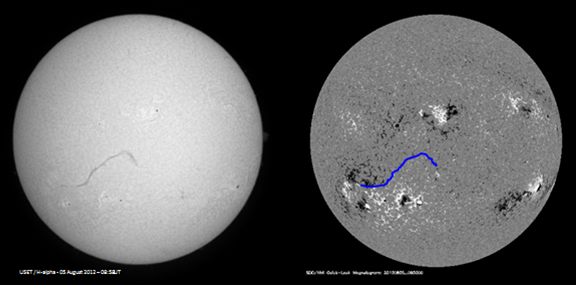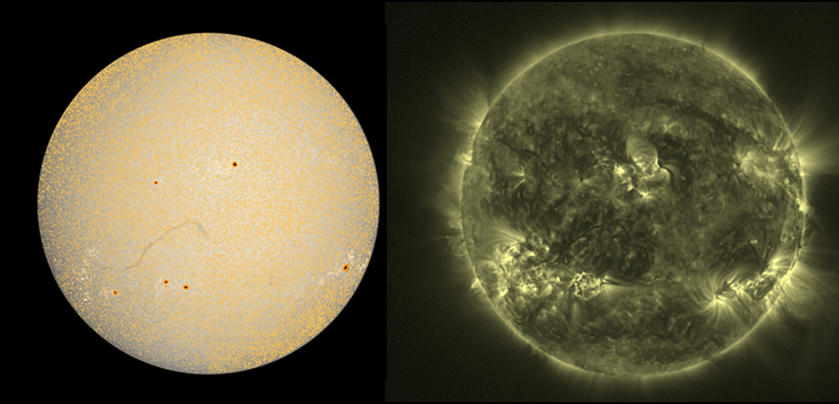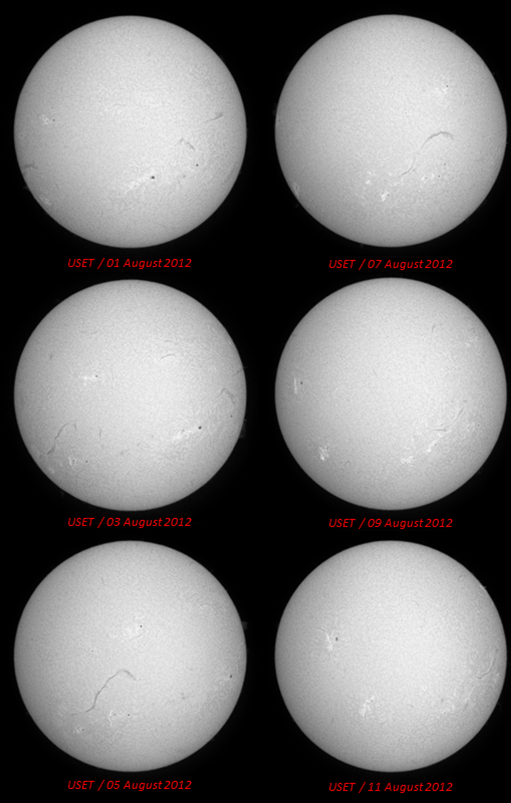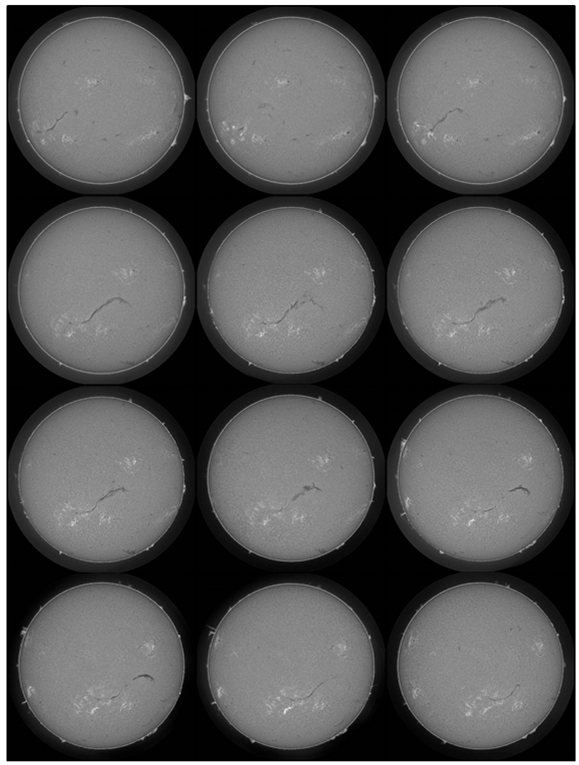Solar filaments are clouds of ionized gas above the solar surface squeezed between magnetic regions of opposite polarity. Being cooler and denser than the plasma underneath and their surroundings, they appear as dark lines when seen on the solar disk using special filters. The image below shows such a filament (USET/H-alpha, left): the cloud blocks the solar H-alpha radiation leaving a shadow-view of the filament. Its silhouette was added in blue to the magnetogram on the right, clearly marking the borderline between negative (black) and positive (white) magnetic polarities (SDO/HMI, right).

Space weather forecasters keep an eye on these filaments. Indeed, as the magnetic regions suspending the filament may become unstable, the filament can erupt and throw a cloud of ionized particles towards the Earth where it can cause geomagnetic disturbances. These eruptions are more likely to occur as the filament grows longer, typically around 200.000 km. Such long filaments usually develop outside sunspot groups.
So, when early August a long filament appeared from behind the Sun's southeastern solar limb, it immediately grabbed the attention of the solar observers. The figure underneath shows the Sun on 5 August 2012 at 09:00UT. On the left is a H-alpha view through the USET-telescope, overlaid with a transparent SDO/HMI image (photosphere) showing the location of the filament outside the sunspot regions. The image on the right is made by PROBA2) and shows the same filament as a thin, dark line snaking its way through the much hotter corona.

At first sight, this filament seems to have been quite stable during its transit. The mosaic underneath was assembled from images made by the (USET/H-alpha telescope ) and shows the evolution of the filament during its 2 weeks visibility. Maximum length was reached on August 6 and 7, and was around 700.000 km. That's nearly long enough to fit in the entire orbit of the Moon around the Earth!

As expected, the filament erupted… a couple of times! Indeed, as amazing as the filament eruptions were, it was even more amazing that the filament was able to rise from its ashes again and again – it simply refused to die! The images below (GONG) show the major eruptions: August 4 around noon, August 6 in the afternoon, same day during the evening, and finally during the early morning hours of August 8. For each event, there is an image before the eruption, one showing how much of the filament disappeared, and a final image showing how well the filament restored itself.

Most impressive was the first eruption on August 4 during which almost the entire filament disappeared. The eruption was probably initiated by a small C3-flare in an active region at the bottom left of the filament. It ejected a cloud of charged particles towards Earth which caused active geomagnetic conditions on August 7-8. Only a few hours later, the filament was already completely restored. This PROBA2-movie shows between 11:00 and 18:00UT all the phases of this highly dynamical event.
During the afternoon of August 6, first the northern half erupted, restoring itself in the next few hours. Later that day, it was followed by the eruption of the southern part of the filament, which would also restore itself but needing a lot more time to do so. Then, on August 8, the northern part was permanently ejected. All three events were accompanied by weak and slow-moving coronal mass ejections that did not trigger geomagnetic disturbances.
The remaining half of the filament started its 2 weeks solar backside transit on August 14, leaving solar observers wondering if they have to prepare themselves for a sequel to this die-hard solar filament. Coming soon to a telescope near you!
 |
 |





